Love. Who do you love? Is it your family members? Your friends? Is it yourself? I love my grandmother. So it broke my heart to learn that she slipped in the bathtub, couldn’t get up, and sat there all night — naked, cold, and alone, until her home attendant came the next morning. If that happened to someone you loved, I know you would be crushed too.
My grandma lived by herself. With a big beautiful heart, she refused a 24/7 home attendant because she didn’t want to use up government resources for those who might need it more. But the only solution in this incident was for someone to have been there to notice her fall and help her. Someone could also have called her, noticed she didn’t pick up, and went over to check on her. She could also have pushed her emergency button but it was out of reach. What if no one ever stopped by and no one ever called though? How many days would she have sat in her bathtub, naked and alone? Helpless?
No human knew she fell. But every single object in the house knew. The bathtub knew she was there all night. Her clothes knew that she didn’t put them back on. Her slippers knew that they were stopped at the bathroom. Her bed knew that she didn’t come to sleep. For all our lives, humans have depended on one another. What if we could expand our dependence to things? What if we could awaken the physical things around us and somehow have them tell us what they know? What if we could tell them to do certain things if they notice something?
What is IoT?
We don’t actually have the power to awaken non-living things. That would be creepy. But we can engineer this idea. The Internet of Things (IoT) is the concept of connecting hardware devices (everyday physical things, sensors, and actuators) embedded with software (applications and programs running behind the sensors and actuators) to a network (e.g. internet, wifi, cellular, bluetooth, LAN, WAN) to enable them to collect and exchange data, with minimal or no human interaction needed.
One component involves embedding sensor software into hardware. For a high level overview, let’s not worry about how we create this sensing ability but just know that there currently exists sensor hardware that can sense heat, temperature, moisture levels, pressure, speed, light, GPS location, electric currents, vibrations, sounds, and similar variables. Sensor software analyzes and processes this “sensed” data. Another component involves collecting and exchanging this processed data. An actuator enables the reactions and controlling of systems. Each IoT device can be programmed to do different things with the data. The data can be stored on a cell phone app for humans to access and control or the IoT device can be programmed to automatically perform certain actions with other connected devices when data outside of normal ranges are sensed.
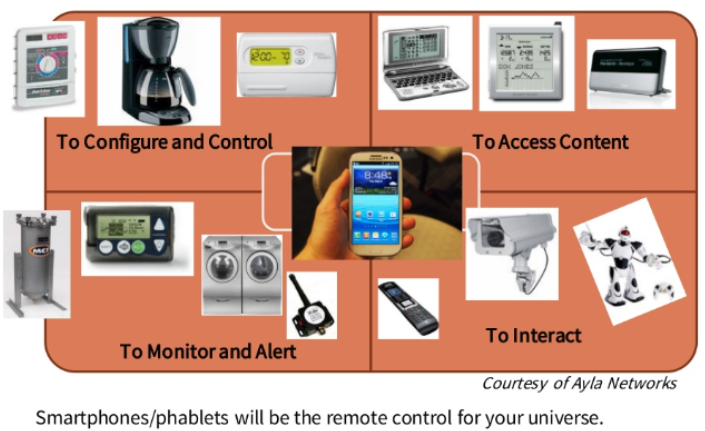
Different ways to use IoT (Photo Courtesy: Stanford Engineering, Tom Lee)
So if I knew about IoT back then, I would put sensors on my grandma’s bed to have it collect data on body heat. I might incorporate machine learning to let the bed know that my grandmother is most definitely in bed by 11pm. I would program the software to send me a text message whenever no body heat is detected (e.g. “Something’s odd. Grandma isn’t in bed and it’s [timestamp] right now”). I would also make her an IoT bracelet that she wears everywhere, even to the shower. The bracelet would have sensors to sense her body vital signs. If she loses consciousness or her blood pressure isn’t in acceptable ranges, I would program it to call the nearest home attendants until one confirms they’re coming over to check on her.
Two Reasons for IoT
When I think of IoT, I split them into two categories. These devices are either created to solve problems to help those who need it most or they provide a more luxurious, entertaining, improved lifestyle. In fact, two of the very first IoT devices are good examples of each. Let’s take a look.
Solving problems/Helping those who need it most
In 1999 when Kevin Ashton coined the term “IoT”, he was frustrated that his local store was out of stock of the lipstick line that he was managing for Olay at the time. He discovered that no one knew the shelf was empty and no one knew the item had to be reordered. So he invented radio frequency identifications (RFID) to track the supplies. This eliminated the need for humans to manually check inventory and let the IoT alert them when inventory should be reordered
.
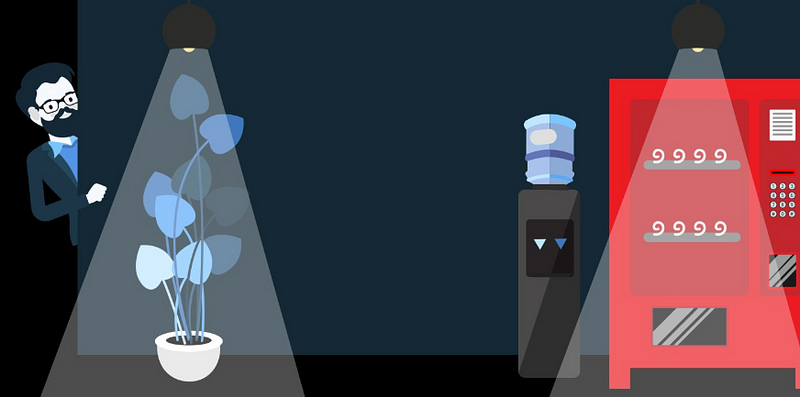
The first IoT in the 1980’s after ATMs (Photo Courtesy: IBM Industries Blog)
Providing a more luxurious, entertaining, improved lifestyle
Before the term was coined by Ashton, David Nichols (and his friends), a computer science student at Carnegie Mellon in the 1980’s, created an IoT to notify him of when to buy a Coke from the school’s soda machine. He was tired of manually walking over to the machine to check if Coke was in stock and to not know if the Coke was cold. So he wrote a program that sensed the amount of Cokes still in the row, when new Coke was restocked, and using math — deduced which Cokes were cold. When a cold Coke was in the front of the row, it alerted him.
Both of these first IoTs dealt with stock supplies but this concept of connected devices can be applied across any field.
Some Examples of How We Are Using IoT Now:
To access sensed content:
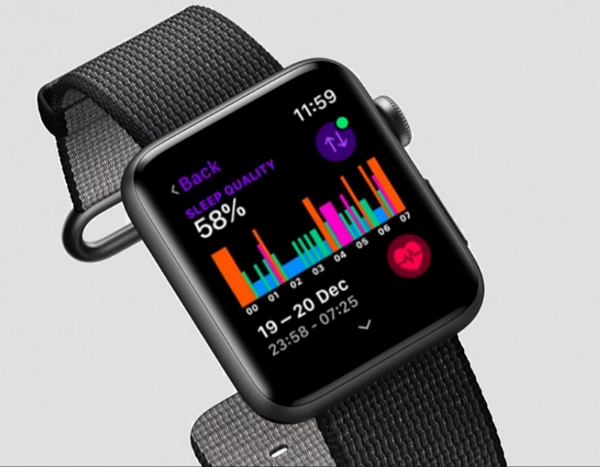
Using IoT to monitor and access our health info (Photo Courtesy: Fitbit)
Wearable Technology: Fitbit and Apple Watches attach to our arms like bracelets to sense movement and pulses. They display back friendly charts and graphs of how many steps we take, how long we haven’t moved, our heart rates, blood pressure, and sleeping patterns.
Smart Homes: The Apple Home app allows us to verbally ask Siri on iPhone for status of things like “Did I lock my door?” or “Did I turn off the stove?”

Using Iot to control appliances in homes (Photo Courtesy: Apple Home app)
To configure and control:
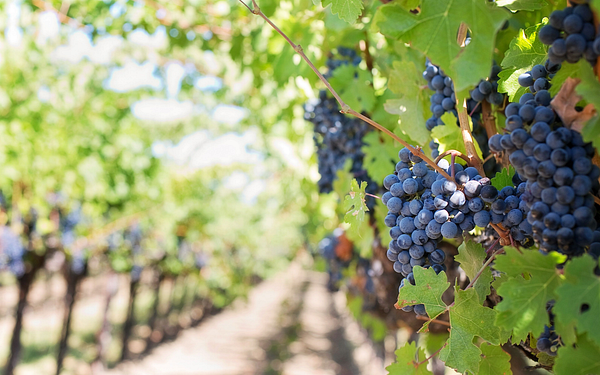
Using IoT on farms and crops (Photo courtesy: Pinterest)
Agriculture: Sensors can sense soil moisture levels and automate irrigation systems to water the field when moisture levels are low.
Smart Lock: If you install Smart Lock, you can choose from different network connections. Sensors placed on a door might detect your bluetooth and unlock the door for you as you approach.
Smart Cities: Amsterdam dims their street lights when no traffic movement is sensed. Buildings can automatically turn off air conditioners or heat when certain temperatures are sensed.
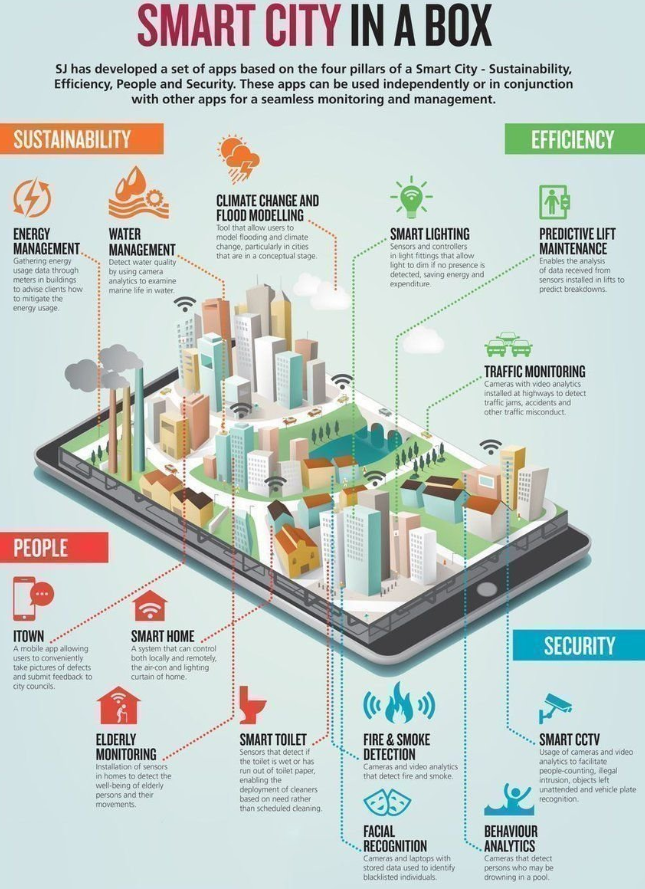
Microsoft & Surbana Jurong’s plans for a smart city in Singapore (Photo Courtesy: Microsoft)
To monitor and alert:
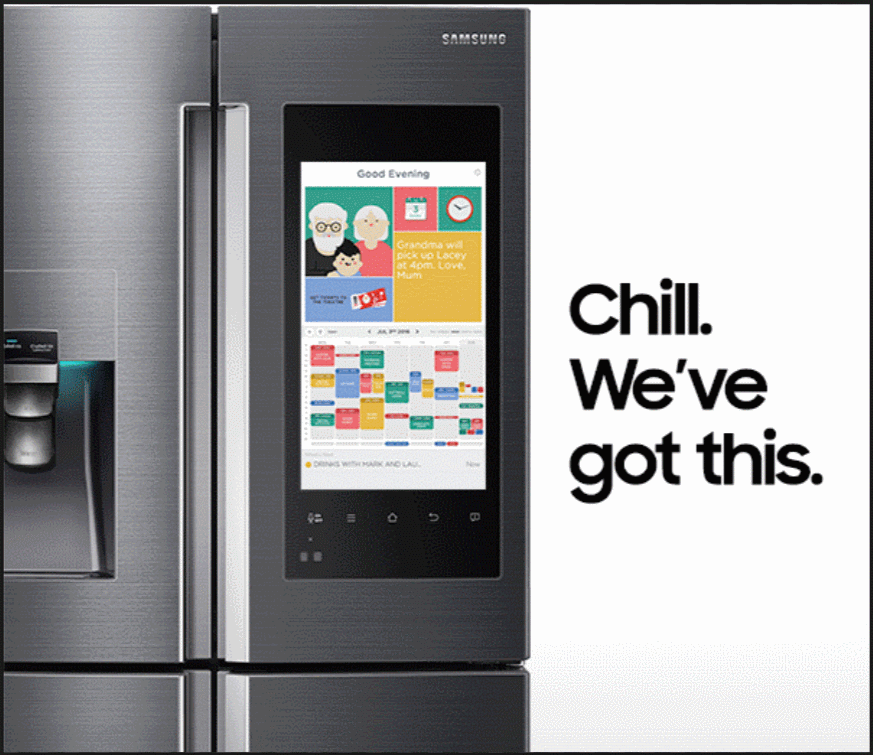
Refrigerators soon to transition from “Smart fridges” to IoT (Courtesy: Samsung)
Smart Appliances: Samsung and LG are expanding on their technology to alert us when the fridge is low on our favorite items like beer and wine.
Smart Parking: Cities are envisioning putting software on meters that can sense when an object is occupying a parking space and alert drivers who are finding parking, via an app. When this is made possible, there will be no more need for drivers in densely populated areas to circle around blocks.

Using IoT jackets to track and save lives (Photo Courtesy: Nokia)
Job Safety: Nokia is working on jackets geared towards first responders and emergency workers. The sensors on it will detect dangerous gas, chemical, and smoke levels and alert the workers of a hazardous environment. Based on body vital signs, if a worker loses consciousness, it’ll send their location to supervisors.
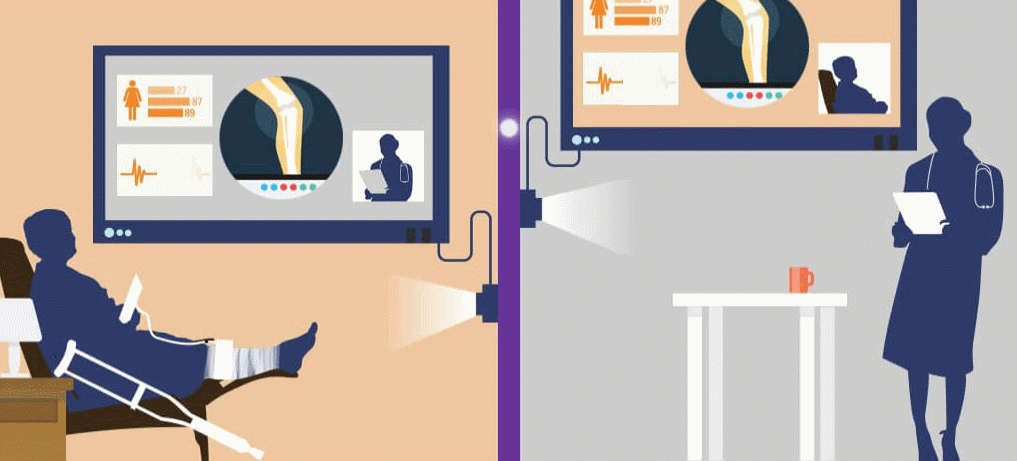
Using IoT to know our loved ones are safe (Photo Courtesy: Cisco)
Monitor elderly: If wearable IoT devices not only collect data on our body vital signs but can also be programmed to act when certain data is sensed, we could monitor the health of our loved ones while we’re not with them. If there’s an abnormal range of body temperature, pulse rate, breathing rate, or blood pressure, the device can be programmed to automatically call for an ambulance, send it’s GPS location to the driver, send the person’s body vital signs over to the hospital, and then contact the emergency contact listed. This device might have sent data to different devices, including one that notifies hospital staff to prepare an operating room and maybe one that notifies doctors in a specific department. So instead of waiting a whole day for the home attendant to discover my grandma in the tub and calling and waiting for family to come, connected devices can immediately help my grandma call for help the night of the incident. This technology is still in progress.
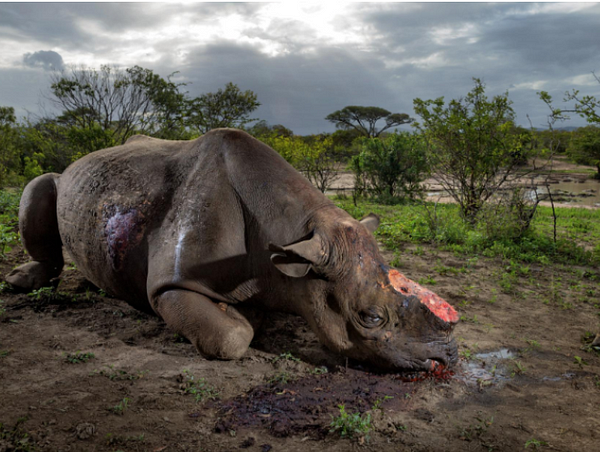
Using IoT to save endangered species (Photo Courtesy: National Geographic)

Left rhino had his tusk forcibly cut off from him (Photo Courtesy: cawclark.com)

Using IoT to reduce time and minimize human effort (Photo Courtesy: Internetofbusiness.com)
Endangered species: South African rhinos are being illegally hunted for their valuable tusks, having their horns physically cut off them while they’re dead or alive. These criminal poachers would illegally drive into protected sites, climb over gates, or drop in from helicopters to steal the tusks. The only way to prevent this was to constantly monitor the security cameras (taking a lot of human effort) and dispatch people to search the field to stop poachers (taking a lot of time). Dimension Data and Cisco partnered up to create “Connected Conservation,” a program that installed infrared cameras, vehicle tracking sensors, and wifi hotspots. If the IoT devices sensed vehicles or movements other than what it was programmed to allow, guards were dispatched to the exact GPS location where the abnormality was sensed. Instead of 30 minutes, guards now arrived at the scene in 7 minutes. Instead of losing 1 rhino every week in 2014, 0 rhinos were lost in 2015. This program is being extended to Kenya, Zambia, and Mozambique. Similar programs using IoT are being introduced to help other animals.
What is not IoT
A common misconception is that electronic devices such as cell phones and laptops are IoT but although they have network connection, they might not have sensors that automatically collect and exchange data. Even if they do, it doesn’t minimize human effort because we have to look at and interact with our cell phones and laptops for them to work.
Benefits
What an IOT should do is:
- Minimize human effort
- Reduce time
- Provide for more accuracy
- Help us use resources more efficiently
- When integrated with machine learning, become more powerful (smart, accurate, and fast)
Make your own IoT
The number of IoT devices have surpassed our current 7.3 billion population because individuals can also make their own IoTs. You can connect sensors to any device you want, and have it display back the data collected via an app on your phone or have it automatically perform an action you program it to when it senses certain data.
Popular toolkits: Rasberry Pi, Ardruino
Popular IoT Platforms: Amazon ASW IoT, Oracle IoT, Microsoft Azure IoT, Google PubSub
Develop some knowledge around: Programming languages (C for Arduino, Python for Rasberry Pi), Computer networks (server, IP address, WAN, LAN), Security (secure info exchange, user onboarding)

Arduino on left, Rasberry Pi on right (Photo Courtesy: PiMyLifeUp.com)
Privacy Concerns
With every IoT device, our data is constantly generated. Naturally, there’s concerns regarding the privacy of this data. For instance, we only want to measure our own exercise patterns but we don’t want others like FitBit to look into our data. A common concern is if the data generated on fitness trackers will be gathered by our health or life insurance. Would they drop us from their plans or raise our prices based on our lack of exercise and our potential to grow sick? The more sensors and cameras there are, the more invasive we might also feel. When the Apple Home app shows us footage of whose in front of our doorstep, does this mean they can look into and analyze our private homes? As long as that data is sent somewhere before it is displayed back to us, our data is never truly ours alone.
Security Concerns
Security concerns naturally follow. How do we ensure only the intended parties like FitBit have access to the data? If big companies like Equifax (who hold all our sensitive personal information like social security numbers) had a data breach, leaving our data unsecured and vulnerable, what makes us think we can trust FitBit or any company that doesn’t have security as its priority? How do we know that all the data sent around is encrypted or that the devices are not sending more information than what is needed? How can we know our devices are not hackable and that criminals won’t be able to figure out the times we are not home by monitoring our electricity usage? What if we forget to change the default passwords on devices and lend to easier hacks? What if someone stole our phones and our houses automatically unlocked for them when our doors sensed the bluetooth network from our phone in their hands?
But at the end of the day, if an IoT is not improving our lifestyle, it is critically helping those in need. We need to address these concerns as a collective society. What are your thoughts on IoT?

Sources:
Beginning the Internet of Things. Kevin Ashton
Dark World of the Rhino Horn Trade. National Geographic
Little Known Story First IoT Device. IBM Industries Blog
The Internet of Everything. Tom Lee. Stanford Engineering
The Internet of Things: A connected future. Digital Risks

